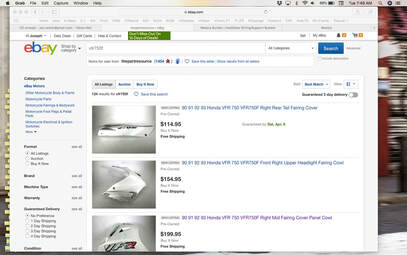 Click on image for the eBay link.
Click on image for the eBay link.
 Click on image for the eBay link. Click on image for the eBay link. The most difficult VFR fairing panels to locate are the third generation, 1990-93. I've never understood why, but they rarely appear on eBay. This morning I stumbled upon this seller, thepartresource, who has a selection of panels available. The seller claims the donor bike hasn't been wrecked, but the parts will still need some TLC. These particular pieces are from a pearl white 1993, but will fit all third-gen models. Click on the image for the link.
0 Comments
So...I was pursuing some threads on VFRworld.com and came across some thoughtful and articulate posts from BIKenG, whom I later came to know as Ken Gillette from the UK. In his posts, Ken referenced a VFR1200 project of his. The photos caught my eye and upon reaching out to Ken, he graciously supplied me with an in-depth account of his custom build, which he calls eVo4. Ken's background includes 50 years of riding, wrenching, racing and teaching motorcycling. He's organized European riding trips and once worked for Honda UK, running the Technical Training Schools. The latter helps to explain the great lengths and technical creativity employed in bringing this project from a 2012 insurance write-off to the well-sorted naked seventh-gen Interceptor we see here.
The technical wizardry list is long — I'll included it as a "Read More" at the bottom of this post for the technically curious. Reverting a modern faired bike into a naked is no small task. Ken moved or eliminated many electronics and added a Puig headlight fairing. The front suspension is an Ohlins unit from a Kawasaki ZZR1400 and the rear shock a VFR Ohlins. The front calipers are Brembo radial units spec'd for the Hayabusa and wheels OEM VFR1200. An Akrapovic muffler is mounted with a custom mid-pipe, tuned with a DynoJet PC-V. More additions include electronic cruise control, heated grips and an instrument pod from the VFR1200X. As a lover of naked bikes and, apparently, a hopeless techno-geek, Ken's biggest challenge was integrating the electronics made necessary by the many changes and additions. His skills and tenacity resulted in the unique and attractive custom seen here. For all the myriad details, click "Read More" below the photos. Thanks to Ken for sharing his beautiful bike. (click on an image to enlarge) 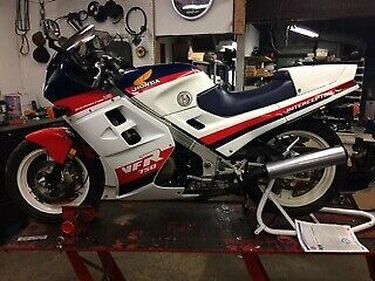 SOLD via eBay auction: $3800 Here we have an original condition second-generation VFR750 Interceptor showing only 6542 miles. After eight bids, the buyer paid $3800. Our seller indicates that the bike has an aftermarket fork brace, but otherwise appears to be in as-delivered condition with miscellaneous scuffs and scratches. The OEM mufflers look good in the small photos and the passenger seat cowl is in place. The bike has been tuned but no word on tire condition...or any other particular details. 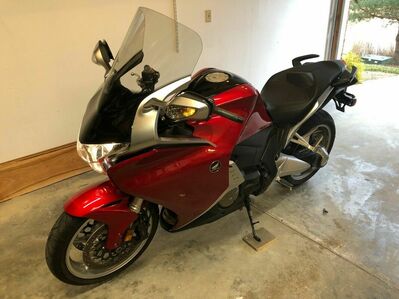 SOLD via eBay auction: $6000 After only 14 bids, this 2010 VFR1200F DCT recently sold for $6000. What makes this particular 1200 special is that its original owner had managed to accumulate only 1275 miles in three years of ownership. It features the optional Dual Clutch Transmission, HeliBar handlebar risers and a larger touring screen. This bike has a very low serial number (00056) and was purchased as a left-over in 2016. The significance of the selling price is that this sale probably represents the high water mark for early VFR1200 values. 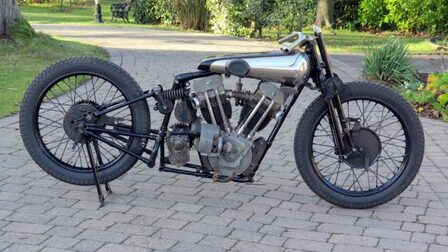 No one can say that jay Leno lacks the knowledge, taste, finances and facilities to make bring any classic vehicle back from the dead and make it the best it can be. This may be his latest challenge. Word on the street is that Jay recently bought this Brough Superior project at auction for an impressive $550,000. But it's not, of course, just any old Brough. This "partially and loosely assembled original SS100 with JAP engine" is a matching numbers bike, documented to have been owned by George Brough himself and raced at the 1930 International Six Days trial. That kind of provenance adds value, both intrinsic and financial. Bikes like these are an important part of our sport's heritage, and this one's in good hands. 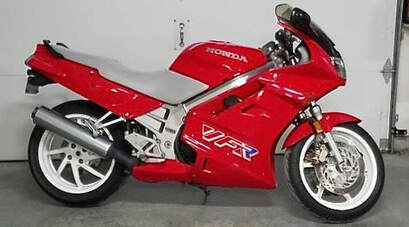 Click on image for the C-list ad. Click on image for the C-list ad. What: 1990 VFR750F Where: Leslie, MO (St. Louis area) Why: Pristine, low-mile survivor Price: $3000 If you're in the market for a classic Honda VFR that you can actually use and be proud to own for many years, this is the droid you're after. The bike shows only 7500 miles, and sparkles in original Italian Red with white wheels and correct gray seat (recovered). Maintenance has been brought up-to-date with carbs cleaned/sync'd, fresh tires, fluids changed...ready to ride. The muffler is OEM, the passenger grab handles are in place, but no sign of a rear seat cowl and the rear fender has been chopped. I don't often see third-gen survivors with such low miles, and this would make someone a perfect vintage sport touring bike. The price is at the top of third-gen values, but the buyer is saving about $1000 worth of maintenance normally needed on a 29-year old VFR purchase. What a great find — thanks to V4 Dreams reader, Roger. Reader Brian F. is looking for a lost love. In this case it's a motorcycle, one he bought new right out of boot camp in 1987. The bike is a 1986 VFR750 (RC24) with a VIN ending in 000447. Brian sold the bike in 1995 in Bloomington, IL and the current title was issued in 2005. If anyone has knowledge of this bike, give me a shout.
This tutorial can also be found on the "Maintenance" page 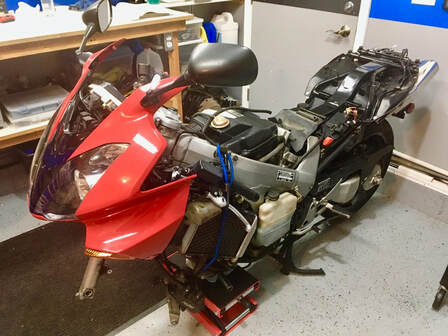 I spent the better part of a day stripping Project 23, a 2002 VFR800, in preparation for fork maintenance together with some electrical additions. No surprises, and actually there's plenty of indicators that this bike has had some quality maintenance done throughout its life. Not surprising, as the previous owner added an extended warranty and service package when he purchased the 800 new. I found a clean K&N air filter in place, a nice surprise, and an inspection of the various body pieces shows nary a crack nor broken fastener. 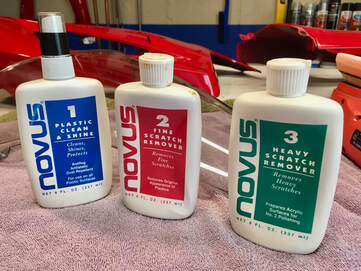 I've already begun buffing the plastic panels and the Italian Red really responds. After 17 years the windscreen is understandably showing some mileage, so this morning I tackled that project. I've used Novus plastic polishing products for many years, but I've also found that going through a refinishing process just like I use on painted surfaces works well also. Either way, we can do a lot for our windscreens with some time and effort. 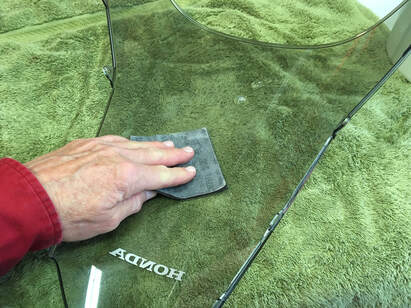 I begin the same as with a painted surface; a light sanding with a 5000-grit wet/dry sponge. Windscreens often have a coating of some sort for UV and scratch protection, so caution is called for here — only a very light sanding. I'm trying to get off scuffs, scratches and old bug marks. Bug juice left on for the long-term will actually imprint itself in paint and plastic. I first soak the screen overnight with a wet towel draped over the screen. Then a good scrubbing with a bug sponge, and then the light sanding. 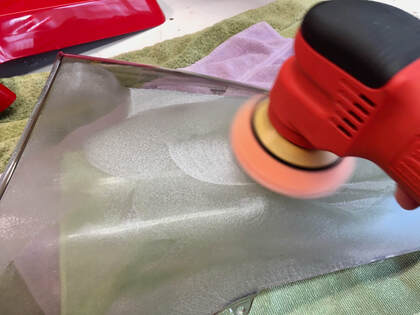 Next, I do a gentle, low-speed machine buffing with Meguiars #83 compound (or Novus #3), followed by a wipe and a second buffing with Meguiars Ultimate Compound (or Novus #2). I refinish one side of the screen completely before beginning the other. This allows me to gauge my progress through the clear plastic. 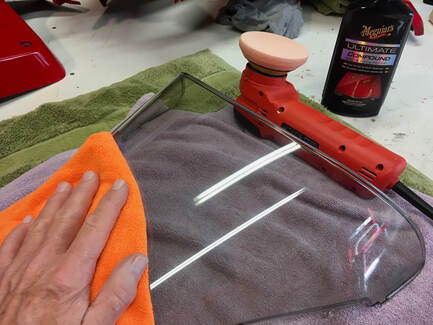 A final wipe with a clean microfiber cloth, then an application of Novus #1, Plastic Clean & Shine, to give gloss and protection. A quality car wax works well also. 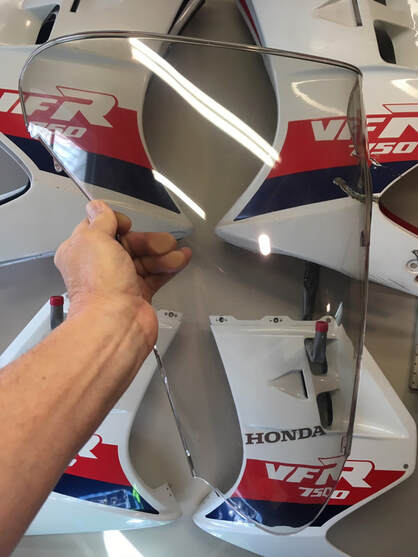 This 17-year old screen isn't perfect, but it will perfectly compliment this refurbished Interceptor. A word on plastics care. In my aviation days, I learned that the only things that should touch acrylics are water, your clean hands and microfiber cloth. Aircraft windscreens and windows are acrylic...expensive acrylic. The love you give them reflects in your pocketbook (and flight safety).
The safe way to clean acrylic is to flow clear, clean water over the screen while gently rubbing with the palm of your hand (no rings!) till the dirt and bugs dissolve. A diluted gentle soap can be used if necessary. Then dry with a known clean microfiber towel. If a drying towel is contaminated with any kind of grit it can't be used again till it's run through a washing machine (speaking of machine washing, never use fabric softener or dryer sheets when washing microfiber). The time to clean windscreens is right after riding when the bugs are still soft. If you find yourself with dried bugs, pre-soften them with a spray of hydrogen peroxide, allowing them to soften a few minutes before washing. I pack two small microfiber cloths when on a ride — one for my face shield and one for the windscreen. I also pack a small, clean water-soaked cloth in a ziplock baggie for washing the shields, which goes into the wash after the ride. NEVER use spray cleaners containing ammonia (Windex), gas station water, scrub brushes, or any paper towel products to clean acrylics!! You're doing more harm than good. Okay, rant over. I received a fresh set of tires last week for Project 24, a 1995 RC36 model which wears radial tires, and out of curiosity set them next to a set of bias-ply tires from the RC24/26 Interceptor ('86-87). The increased width of the newer generation radials was immediately evident, especially on the rear — the fronts are spec'd at 20mm wider and the rears 30mm. In the U.S. the change to radials came with the 1990 model. Why radials? Are they inherently better than bias-ply? Yes...in general. Both designs have their place, even today. Like many street bike advances, the use of radial tires on high-performance motorcycles was born of racing demands. As power and speeds increased back in the 80's, the old bias-ply designs couldn't take the heat of competition and so became a limiting factor in winning races. Radial design allows more sidewall flex but run cooler, increasing tire life. Other desirable effects include the ability to conform a bit better to road surface irregularities and provide a slightly larger contact patch (more grip). From a race tire engineer's perspective, an inherent limiting factor with bias-ply design is that the sidewall height must increase as the width increases, so to get a nice fat tire, the diameter grew — not good. Radial design has no such correlation.
But wait...it's not all bad news for the old bias-ply, and for the sport bike crowd it centers around the concept of "handling." That all-encompassing word has a whole boatload of variables, but tires are a big one. When you ride an RC24/26 ("skinny" tired) beside a later model ("fat" tired) what becomes noticeable is something called "turn-in." The older bike seems a little lighter on its feet...but the bike's not physically lighter. This is due to two forces of physics. One is that, other factors being similar, a narrower tire has less rotating mass (think gyroscope) and so can change direction more easily (this was also the thinking behind the popular use of a 16-inch front wheel back in the day). The other is a combination of the contact patch's offset from the bike's centerline (when leaned) and its resulting effect on the bike's center of gravity. The net effect is that a narrower tire can take the same turn at the same speed, but at less lean angle compared to a wider tire. For us mortal street riders, it provides a much appreciated benefit — we don't have to lean as far (for a given speed) on our skinny tired machines, giving an extra margin of safety. An interesting historical fact: The hallowed RC30 spec'd a bias-ply/radial combination during its production — the front a Bridgestone Excedra 120/70 17, the rear a Bridgstone Cyrox 170/60 R18. While such a mix is generally considered sinful, the engineers must have had their reasons. I like radial tires as much as anyone, but don't feel sorry for us RC24/26 riders. Our bikes' handling mirror their look; light and athletic. The illustrations below help to illustrate the forces at work here. (source: Total Control, by Lee Parks) I will be marinating on a warm beach till March 12th, intentionally far enough away that cell phone and internet will be a distant memory. Ahhhh....
|
THE SHOP BLOG
|
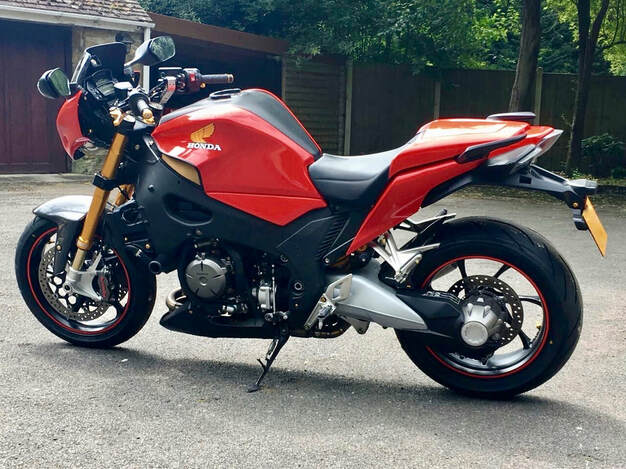




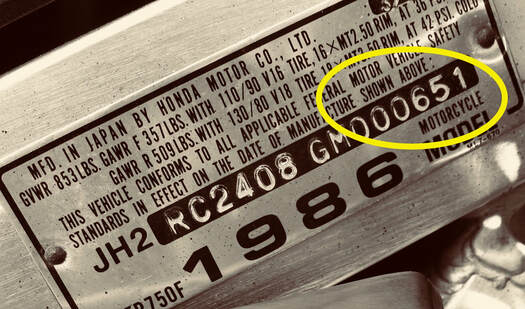
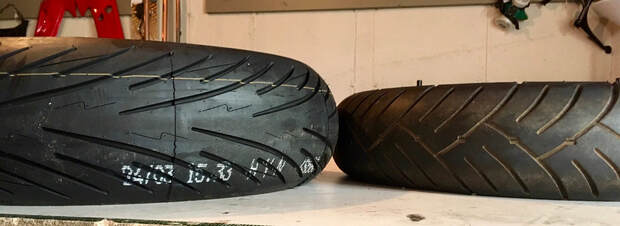
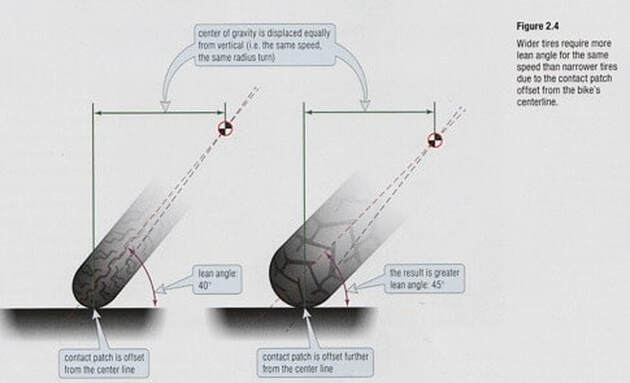
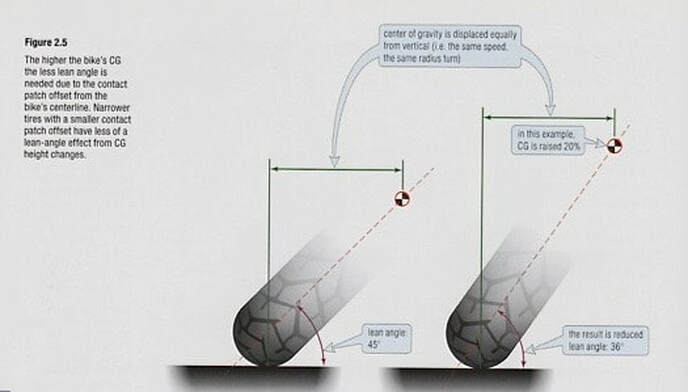
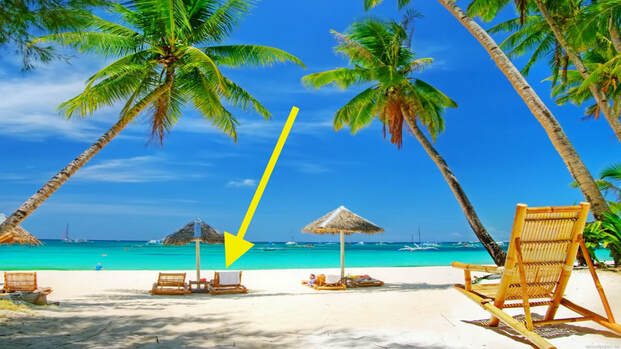
 RSS Feed
RSS Feed